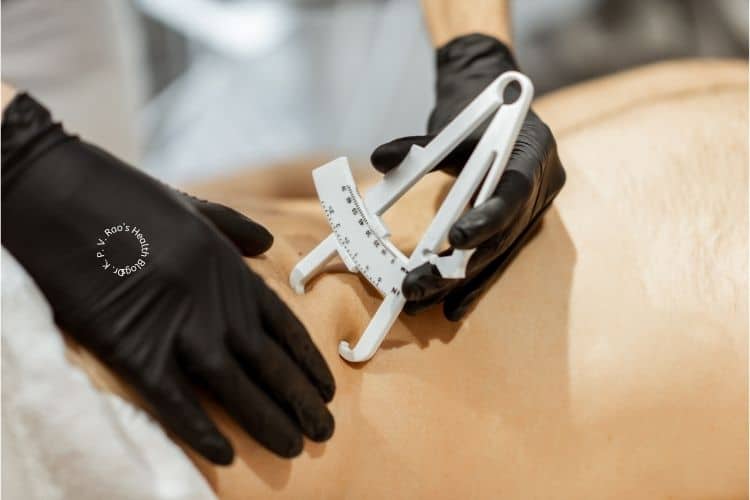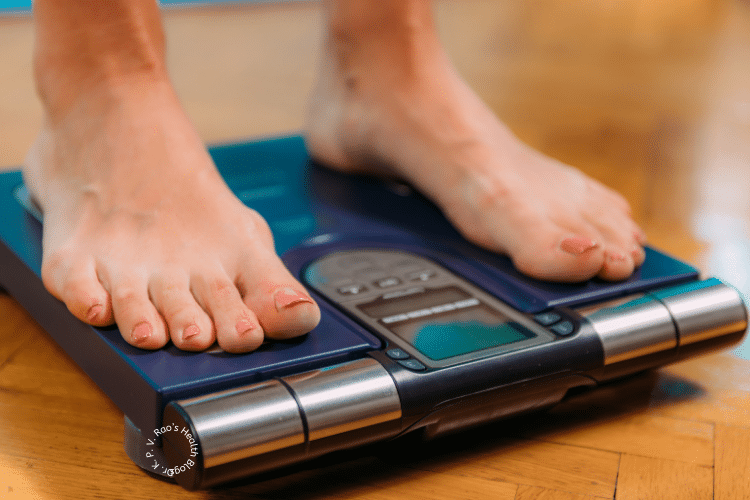Obesity-How to Measure It
Introduction
Obesity or being very fat has been on the rise by the day.
In this article, we are going to discuss how to define if one is obese or not, in other words, to measure Obesity.

Why is knowing Obesity more important today?
As you can see in the picture above, being obese can cause many complications. Some of these like high blood pressure, stroke, and diabetes are very important for leading a healthy life.
Are there any ways to measure this fattiness?
Yes, there are and they are as follows:-
Body Mass Index
Popularly known as BMI, this is calculated by dividing your body weight by your height in square meters. A simpler way is to fill in your details below in the BMI calculator to get instant readings-check it out-
Calculate Your BMI:-
Waist and Hip Circumference
The waist to hip ratio also helps whether you are obese. This is by far the easiest way to know whether you are obese or not. Check it out below-
You can measure the circumference of your hip by using a measuring tape around the maximum point around the torso and waist size by measuring the circumference of your abdomen just below the ribcage.
The table below shows the different categories of individuals based on waist circumference.
Table 1
| Gender ⇓ | Waist size ⇒ | Normal range | Overweight | Obese |
| Men | 90 cm | 90- 99 cm | >100 cm | |
| Women | 80 cm | 80-89 cm | >90 cm | |
The Waist to Hip Ratio-
Now calculate your waist to hip ratio by dividing the value of the waist by the value of the hip.
A waist to hip ratio of 0.80 in women and 0.90 in men is considered ideal. Any value above this is a sign of either being overweight or obese.
You can calculate your WHR instantly using this calculator-
3] Basal Metabolic Rate [BMR]
The Basal Metabolic Rate or simply BMR is the energy that the body requires at rest to carry out its bodily function while resting. The lower the BMR the better. For quick calculation, you can click the link below-
So, what is BMR and why is it important?
Basal Metabolic Rate (BMR) is the amount of energy that a person’s body burns at rest. This energy is used to maintain basic bodily functions such as breathing, blood circulation, and cell production.
It is important to know your BMR as it can help determine how many calories you need to consume each day in order to maintain, lose, or gain weight.
Factors that impact BMR include age, gender, weight, height, and muscle mass. By understanding your BMR, you can make informed decisions about your diet and exercise routine to achieve your health goals.
Body Fat Measurement
Nowadays there are many gadgets that can measure the amount or quantity of fats in our body.
Measuring skin thickness is one way of doing it.

Total body fat refers to the percentage of body weight that is comprised of fat tissue. While some amount of body fat is necessary for normal bodily functions, an excess of body fat can lead to a range of health problems.
It is therefore important to monitor your body fat levels regularly. In addition to total body fat, there are different components of body fat that can also be measured. These include visceral fat, which is the fat that surrounds your organs, and subcutaneous fat, which is the fat that lies just beneath your skin.
Ideal values for body fat percentages vary depending on age, gender, and activity level. For example, a healthy range for men is typically between 10-20% body fat, while for women it is between 20-30%. However, athletes and highly active individuals may have lower body fat percentages while still maintaining good health.
It is important to note that body fat percentages should not be used as the sole indicator of health, and other factors such as muscle mass and overall fitness should also be considered.
Regular exercise, a balanced diet, and monitoring body fat levels can all contribute to maintaining a healthy body composition.
I use this gadget in my Clinic for body fat analysis-

You can also get a similar Smart Scale online. Use this link- Smart Scale– to get it on Amazon.
Ideal Body Weight
I would now like you to know how to calculate your ideal body weight first. There is a simple formula to do this- you can calculate by using this formula-
A] Men:- 52+ 1.9 kg per inch over 5 feet.
[For eg., if you are 5 feet 6 inches, your ideal body weight will be 52+ 1.9 x 6= 63.4 kg]
B] Women:- 49+ 1.7 kg per inch over 5 feet.
For a faster way to calculate your ideal bodyweight, use this calculator-
How do these measurements help-
Now that you know how to calculate these measurements, you can determine if you are-
- Normal
- Overweight
- Obese
- Severely Obese
You can control obesity by staying active and becoming less sedentary. Click here to know how-WHO Guidelines.
Final words
In this article, I have provided almost everything you need to know to rule out obesity, using different ways to calculate it.
If you have found it useful, do share by using the social media icons below this article. You can also click to Tweet here-
OBESITY Part 2-Know Your BMI, Waist to Hip Ratio Share on XAdios.



